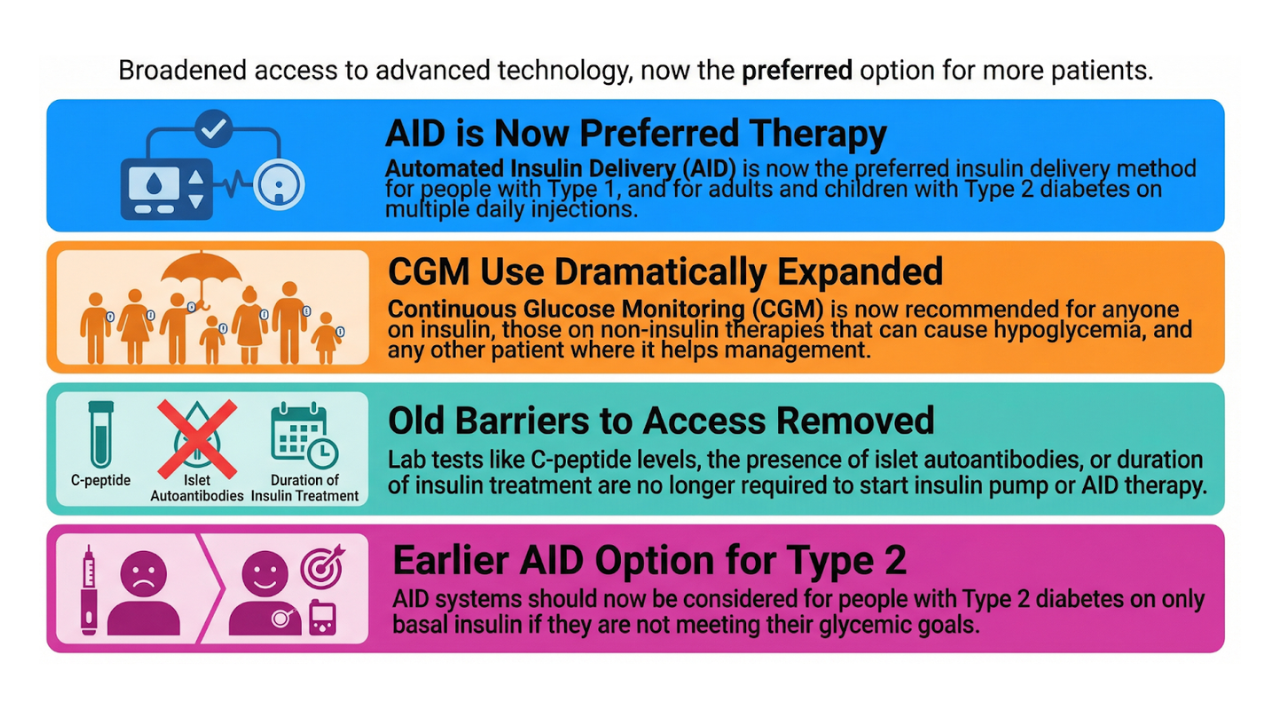Update February 2023
Feb 22, 2023
The largest congress on diabetes technology, the ATTD, started today. From February 22 to 25, the congress will take place at the Berlin Fair, where you can learn all about Advanced Technology & Therapies Diabetes. The good news is that you can also follow the congress virtually. This is especially useful when several sessions are taking place at the same time and you want to watch them afterwards.
On the first day of the congress, Insulet announced that UK and Germany will be the first countries in Europe to start using the Omnipod 5.
Get Access To Updated Diabetes Technology Courses
But there is more news to report this month:
- Insulet purchased Bigfoot Autonomy (15-2-2023) and ACG (14-2-2023);
- Publish Endocrine Society Guidelines for people with diabetes and high risk of hypoglycemia (15-2-2023);
- European Commission votes to postpone new MDR legislation (16-2023);
- ChatGPT predicts future of diabetes technology (17-2-2023).
Continue reading below to keep up with the latest news on diabetes technology.
1. The first European countries that may start Omnipod 5 are UK and Germany

On 21-2-2023, Insulet announced on its website that the Omnipod 5 will be launched in the United Kingdom by mid-2023 and in Germany by the end of 2023.
At the ATTD Congress today (22-2-2023), Dr. Trang Ly (Medical Director Insulet Corp) stated that other countries will probably have to wait until 2024. This may be somewhat disappointing news for those looking forward to this convenient closed-loop system, but complying with all national data sharing and data privacy guidelines would require a lot of work.
Furthermore, Insulet confirmed that they are still working on integrating the Dexcom G7 and Libre2 sensor, as well as developing an iOS app for Omnipod 5. However, they could not say when this would be commercialized.
2. Insulet buys Bigfoot Autonomy (13-2-2023) and Automated Glucose Control (14-2-2023)

Bigfoot Biomedical had been working on a closed-loop system with the Asante insulin pump and Libre sensor since 2016.
Although it looked like a promising project, there were no updates on Bigfoot Autonomy for a long time. Apparently, Insulet bought out its intellectual rights on 13-2-2023 (for $25 million), so we won't have to expect a future launch of the Bigfoot Autonomy either.
A day later, on Valentine's Day (14-2-2023), Insulet announced that they paid another $25 million for the intellectual rights of a closed-loop algorithm from California (Automated Glucose Control).
Insulet is strengthening its position as a world leader in closed-loop systems with these 2 purchases.
3. Management of Individuals With Diabetes at High Risk for Hypoglycemia: An Endocrine Society Clinical Practice Guideline 2023 (15-2-2023)

The Endocrine Society published guidelines for people with diabetes and high risk for hypoglycemia on 15-2-2023 in JCEM.
#1 Anyone using insulin or sulfonylurea should wear a glucose sensor
Interestingly, people who use insulin or require sulfonylurea are considered at high risk for hypoglycemia.
Therefore, the use of continuous glucose monitoring (CGM) is recommended for all such people.
This recommendation goes beyond recent ADA guidelines, which recommend CGM only for people on insulin.
Unfortunately, CGM for this large group is not currently reimbursed, but hopefully this recommendation can convince policymakers of the importance of using glucose sensors to prevent hypoglycemia.

#2 Choose glucagon where you don't have to dissolve the powder yourself
Another notable recommendation relates to glucagon. A significant difference is made between glucagon that requires you to dissolve the powder yourself and glucagon that does not require this. According to the Endocrine Society, the ready-to-use form of glucagon is preferable because it is much easier to administer.
The ready-to-use glucagon can be administered intranasally (Baqsimi) or with an auto-injector (Gvoke or Onlguo). The availability of these products varies from country to country.
#3 Preference for closed-loop systems in people with type 1 diabetes
The Endocrine Society talks about ADIP technologies, which stands for Algorithm-Driven Insulin Pumps. This is yet another term for closed-loop systems or Automated Delivery Systems.
They emphasize again that these systems are preferred for anyone with type 1 diabetes.
These and other guidelines can be read for free via this link.
4. European Parliament extends transition period of Medical Device Regulation (16-2-2023)

On Feb. 16, 2023, the European Parliament voted to extend the transition period from the old to the new MDR from 2024 to 2028. This is good news because the new MDR makes it much more difficult for companies to market new insulin pumps, sensors and closed-loop systems.
Obtaining a CE label for medical devices, such as new insulin pumps, sensors, and closed-loop systems, is outlined in the MDR legislation. However, the new MDR is much more intensive, costly, and time-consuming than the old one. As a result, most companies decide to first bring their devices to the U.S. market, where obtaining an FDA label is easier.
In the process, we see some companies withdrawing their products from the European market as a result (such as the AccuCheck Insight pump, for example). If this trend continues, there is a risk of shortages of life-saving devices for patients.
Therefore, extending the transition period from the old to the new MDR is a welcome development. This gives companies more time to comply with the new and stricter regulations, while patients continue to have access to the latest and greatest medical devices.
5. ChatGPT predicts future of diabetes technology
 "Using ChatGPT to Predict the Future of Diabetes Technology" was published on 17-2-2023 in JDST.
"Using ChatGPT to Predict the Future of Diabetes Technology" was published on 17-2-2023 in JDST.
This describes what ChatGPT answers when asked "What is the future of diabetes technology?" This was the answer:
The future of diabetes technology looks promising, as researchers and engineers are working on developing new and innovative devices and tools to help individuals with diabetes manage their condition more effectively. Here are some of the areas that are showing significant progress:
Well ... we honestly expected a little more from it.
This article also describes that the role of ChatGPT and other chat-bot interfaces in answering scientific and clinical questions is not yet clear.
"Although ChatGPT appears to be a promising tool for developing and improving diabetes technology, there are significant limitations of the model, such as the lack of transparency of the data source and the quality of the data used to train the model. To integrate ChatGPT into diabetes research, thorough evaluation, diversity of data and quality control by human experts of the training dataset will be required."
As always, the development of diabetes technology does not stand still. Every year the ATTD congress gives us a glimpse into the future and brings us up to date with the latest developments and breakthroughs. It is clear that the Omnipod 5 will soon be available in Europe, and that we can expect even more innovative solutions in the future. We will continue to follow these developments closely and keep you updated on the latest news in the world of diabetes technology.
Best regards,





